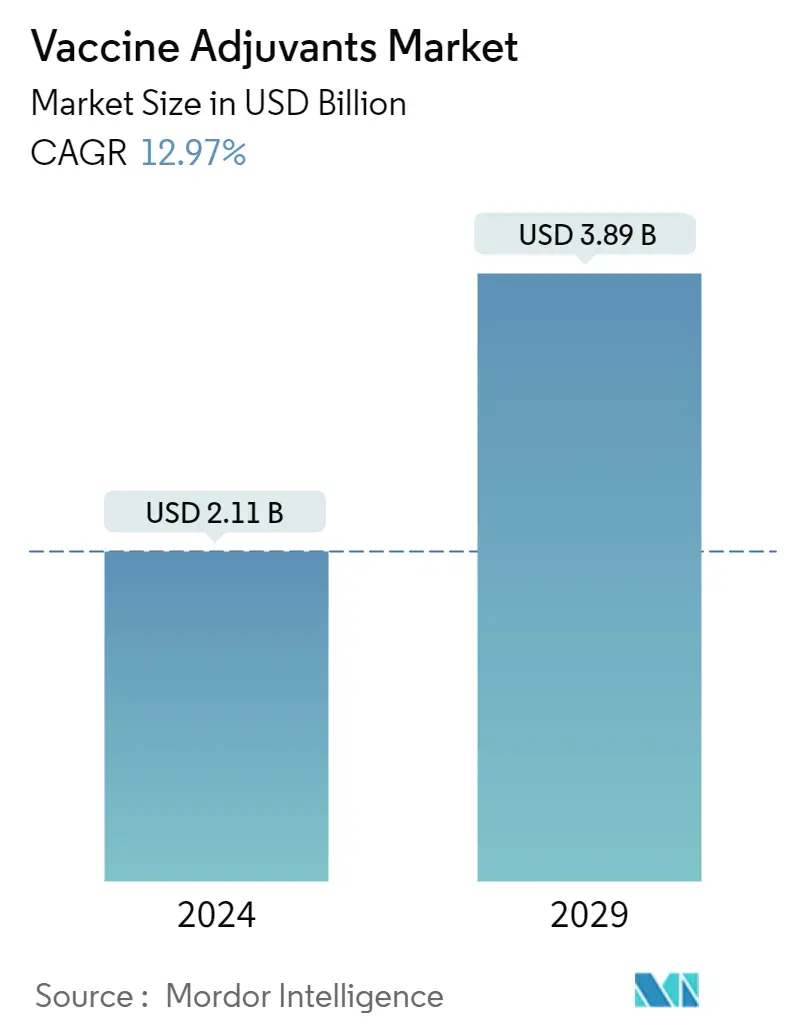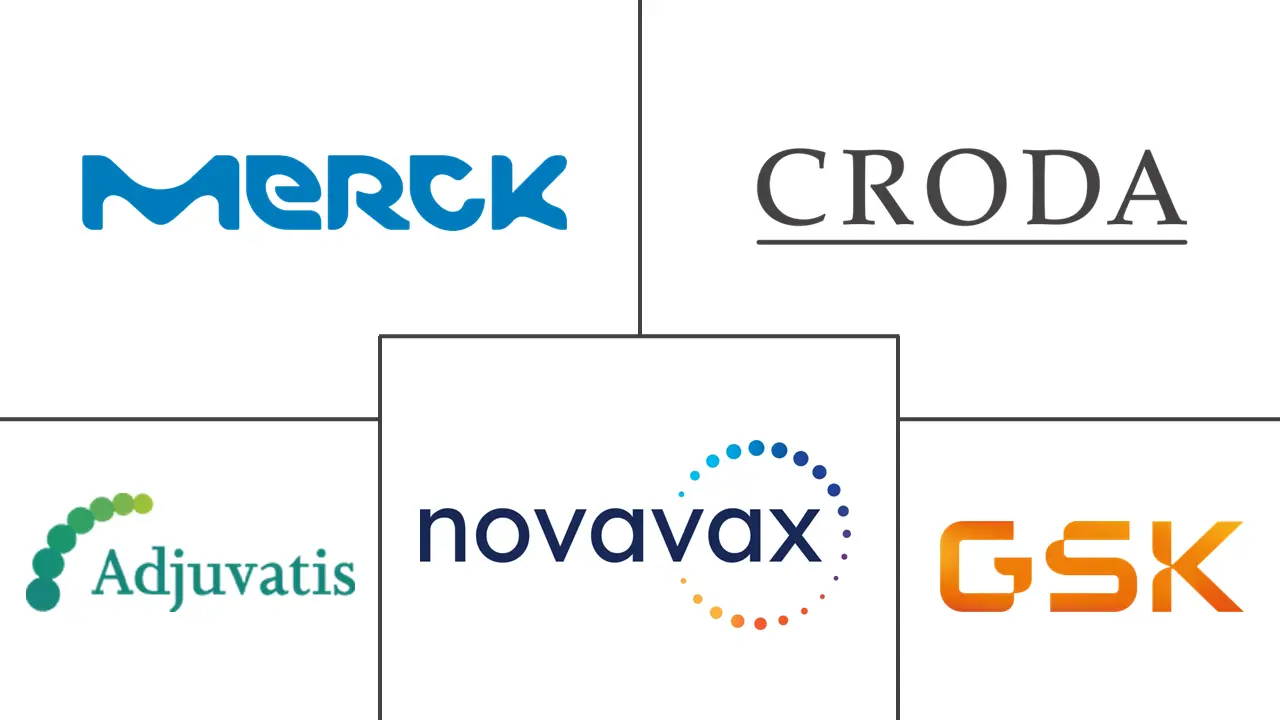Market Size of Vaccine Adjuvants Industry

| Study Period | 2019 - 2029 |
| Market Size (2024) | USD 2.11 Billion |
| Market Size (2029) | USD 3.89 Billion |
| CAGR (2024 - 2029) | 12.97 % |
| Fastest Growing Market | Asia-Pacific |
| Largest Market | North America |
Major Players
*Disclaimer: Major Players sorted in no particular order |
Need a report that reflects how COVID-19 has impacted this market and its growth?
Vaccine Adjuvants Market Analysis
The Vaccine Adjuvants Market size is estimated at USD 2.11 billion in 2024, and is expected to reach USD 3.89 billion by 2029, growing at a CAGR of 12.97% during the forecast period (2024-2029).
The COVID-19 pandemic had a significant impact on the market. Adding appropriate adjuvants to COVID-19 vaccines substantially reduced the number of required doses and improved efficacy or cross-neutralizing protection. For instance, according to an article published by Viruses in February 2022, various vaccine launches for COVID-19 had shown decreased protection against variants of concern (VOCs) of SARS-CoV-2, and there were increasing numbers of breakthrough infections with VOCs in the vaccinated population. This called for the stepped-up development of adjuvanted vaccines that induce effective and durable protective immunity against SARS-CoV-2 and its emerging variants.
Thus, COVID-19 impacted the market positively. As per the above source, adjuvants used with SARS-CoV-2 vaccine candidates were aluminum-based adjuvants, STING agonist-based adjuvants, oil-in-water emulsion adjuvants, TLR agonist adjuvants, and a few more. Therefore, due to the advantage and development of new vaccine adjuvants, the demand also increased during the COVID-19 pandemic and is expected to grow in the coming period.
The factors that promote the growth of the vaccine adjuvants market include unmet demand for specific vaccines, increasing government vaccination recommendations, and increasing use of recombinant subunit and synthetic vaccines. For instance, according to the data published by the WHO in the Global Tuberculosis Report 2021, most of the tuberculosis cases were found in the WHO regions of Southeast Asia (43%), Africa (25%), and Western Pacific (18%), and lesser numbers of tuberculosis cases were found in Eastern Mediterranean (8.3%), the Americas (3.0%) and Europe (2.3%). Additionally, according to the WHO data published in 2021, Sub-Saharan Africa likely continues to endure the burden of malaria, accounting for approximately 95% of all cases and 96% of all deaths. Thus, rising cases of infectious diseases are expected to increase the demand for vaccines, resulting in the high growth of the vaccine adjuvants market.
Furthermore, according to the CDC update in January 2021, in order to prevent occupational exposure to the Ebola virus species Zaire ebolavirus, the Advisory Committee on Immunization Practices (ACIP) recommends preexposure vaccination with Ervebo for adults in the U.S. population older than 18 years of age who are at more risk. This is because they are responding to the Ebola virus disease outbreak (EVD). Therefore, increasing government vaccination recommendations is expected to drive market growth.
Companies are introducing new, more sophisticated vaccine adjuvants, which are anticipated to significantly support the market's growth. For instance, in December 2022, Evonik launched PhytoSquene, a non-animal-derived squalene suitable for vaccines and other pharmaceutical applications. PhytoSquene is an amaranth oil-derived squalene on the market for use in adjuvants in parenteral dosage forms. It meets the demand for a secure commercial supply of non-animal-derived squalene. Such instances are expected to drive the market's growth over the forecast period.
Thus, these factors mentioned above, such as unmet demand for specific vaccines, increasing government vaccination recommendations, and increasing use of recombinant subunit and synthetic vaccines, are anticipated to boost the market's growth over the forecast period. However, side effects, the high toxicity of adjuvants, and the high R&D cost of developing a new adjuvant are expected to hinder the market's growth.
